Polygonia c-album
(Linnaeus, 1758)
-
 Subfamily:: Nymphalinae - Nymphalini
Subfamily:: Nymphalinae - Nymphalini -
 Wingspan: 40-50 mm
Wingspan: 40-50 mm -
 Flight period: (Jan) May - Oct (Dec)
Flight period: (Jan) May - Oct (Dec) -
 Spread: Common
Spread: Common -
 Host plants: Betulaceae - Salicaceae - Urticaceae ...
Host plants: Betulaceae - Salicaceae - Urticaceae ...
Information
The Polygonia c-album also known as Vanessa C white is a butterfly of the Nymphalidae family, subfamily Nymphalinae, of medium to large size,
with wingspan of 40 - 50 mm.
It is distributed throughout Europe, in Italy it is also present in the islands. *
The Polygonia c-album is an orange butterfly with black spots on the upper side of the wings that have a fringed edge, very useful when closed.
since, normally in the act of sucking, they give the appearance of a dry leaf. On the underside of the rear wing there is a white "C" -shaped spot
that distinguishes it, the sexual dimorphism is not very evident, the male is smaller than the female and has more pronounced spotting. **
Butterfly with two generations (bivoltine) has the flickering of the first generation between May and July while those of the second occur between August and October.
It winters as an adult but can be found in flight even in the middle of winter, on sunny days, it reappears in any case very early, towards the end of February.
Flying fast, it makes frequent stops everywhere, both to warm up and to suck moods and from the wounds of trees, rotten fruit or mud.
It can be found in the wooded countryside and at the edge of the woods, sometimes even in the city. It is encountered from the basal to the mountain level throughout Italy.
Even the caterpillar bases its existence on camouflage ; brown-orange in color, has thorns all over the body, and a white dorsal band that covers more than half of the body;
the coloring of the thorns is influenced by the presence of this band, in fact the thorns of the posterior part are whitish and those of the anterior part brown orange.
If immobile, it is very reminiscent of bird droppings.
Practically polyphagous, it develops at the expense of various species, both herbaceous and arboreal, in fact we find it on Betulaceae such as Corylus sp including Corylus avellana (hazel),
on Salicaceae such as Salix caprea, Ulmaceae Ulmus glabra (elm), Cannabaceae such as Humulus lupulus (hops), Grossulariaceae on various species of Ribes and Urticaceae such as Urtica dioica (Nettle).
* Lepidoptera mundi https://lepidoptera.eu/ - Fauna Europea https://fauna-eu.org/
** Bestimmungshilfe für die in Europa nachgewiesenen Schmetterlingsarten - http://lepiforum.de/


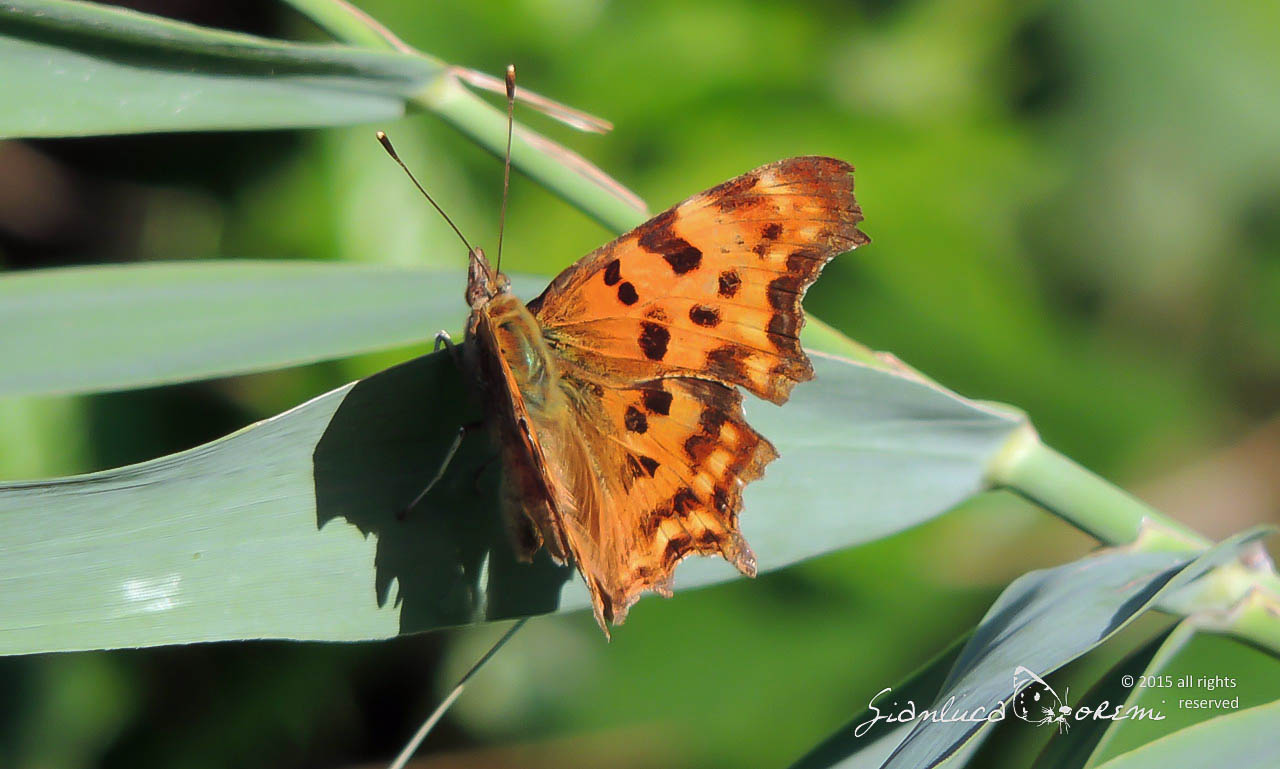
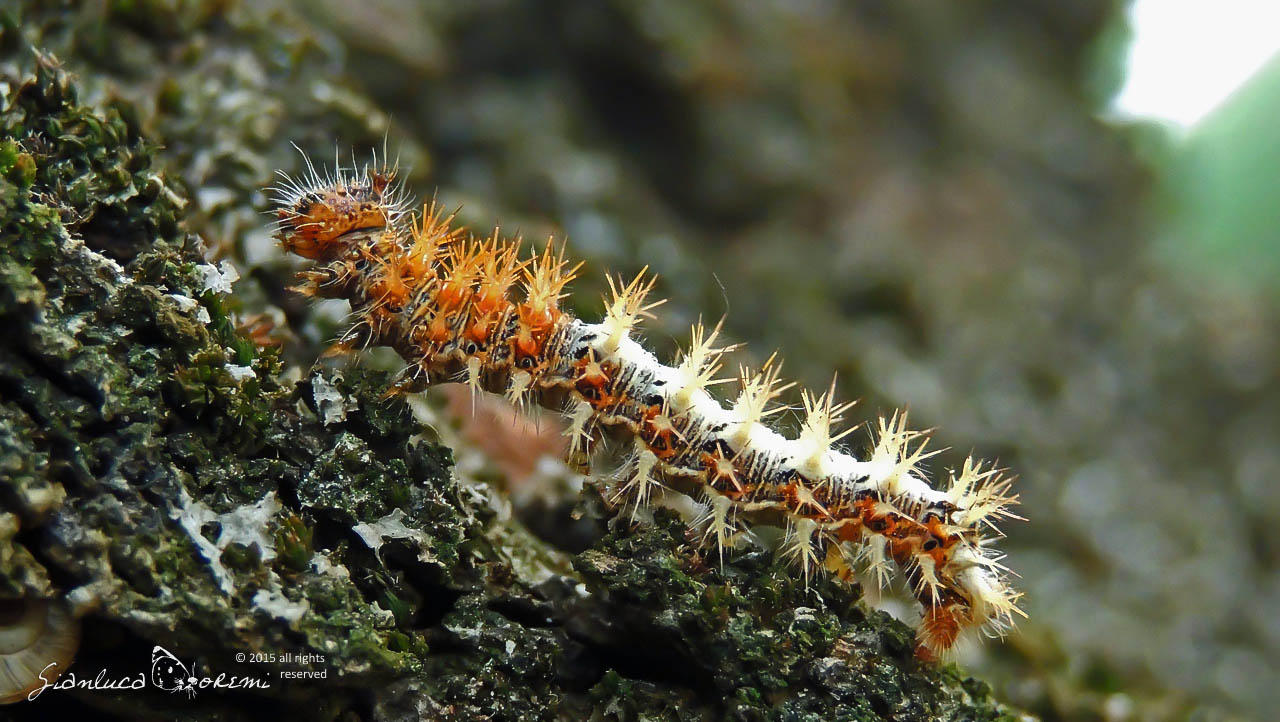
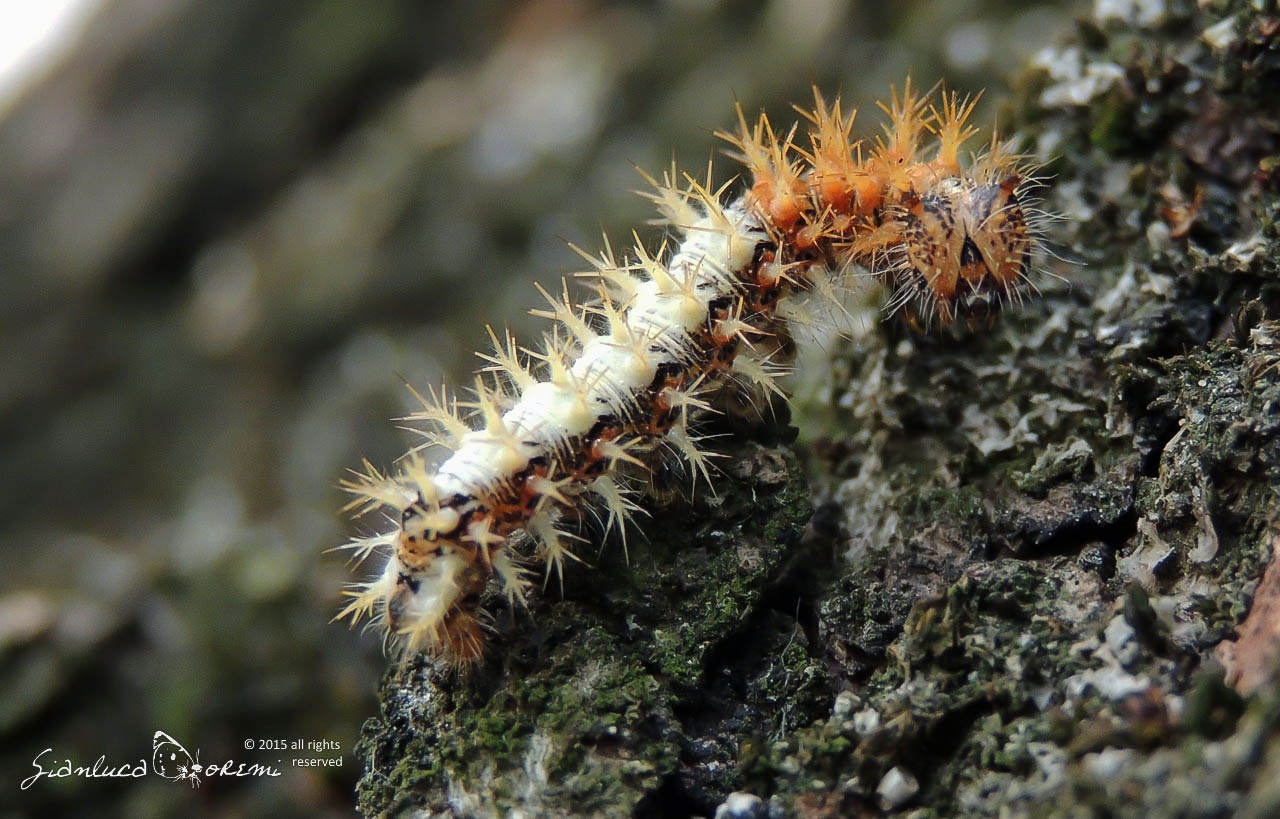
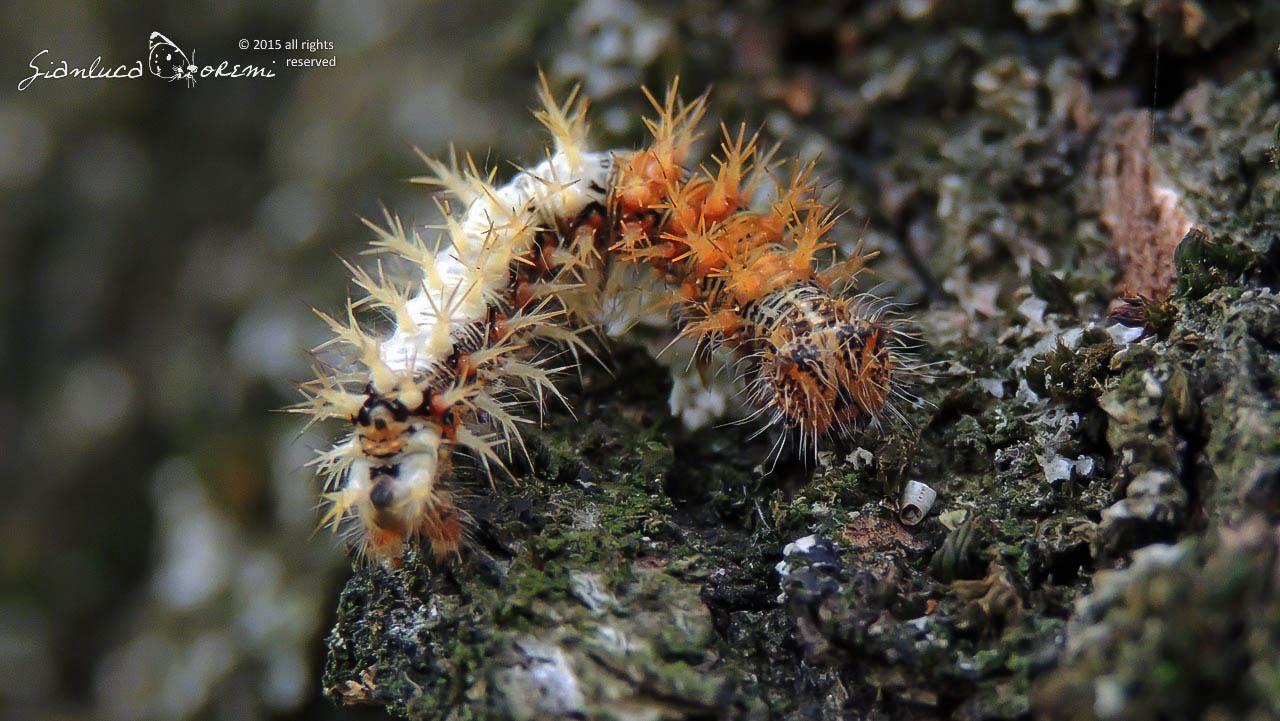


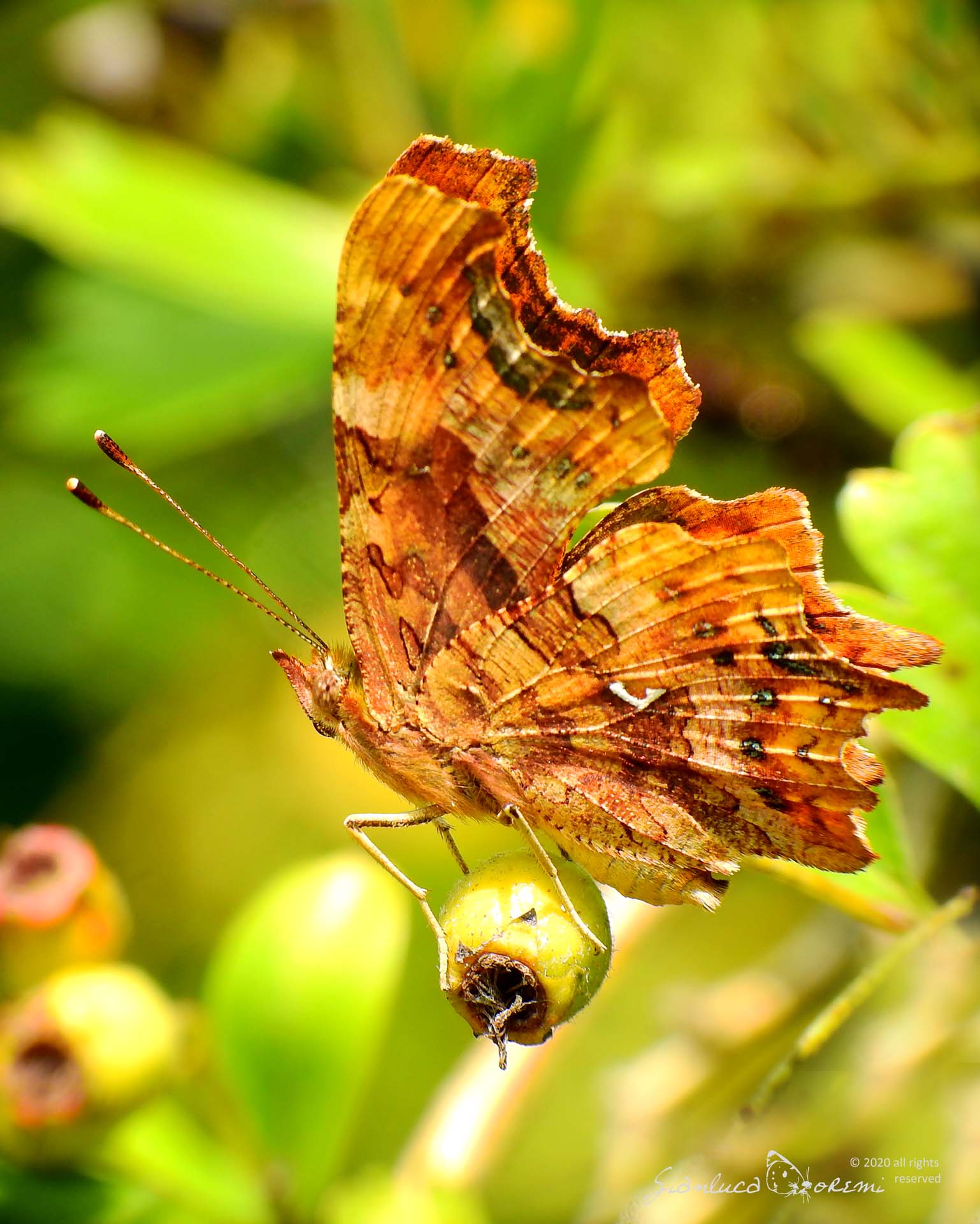
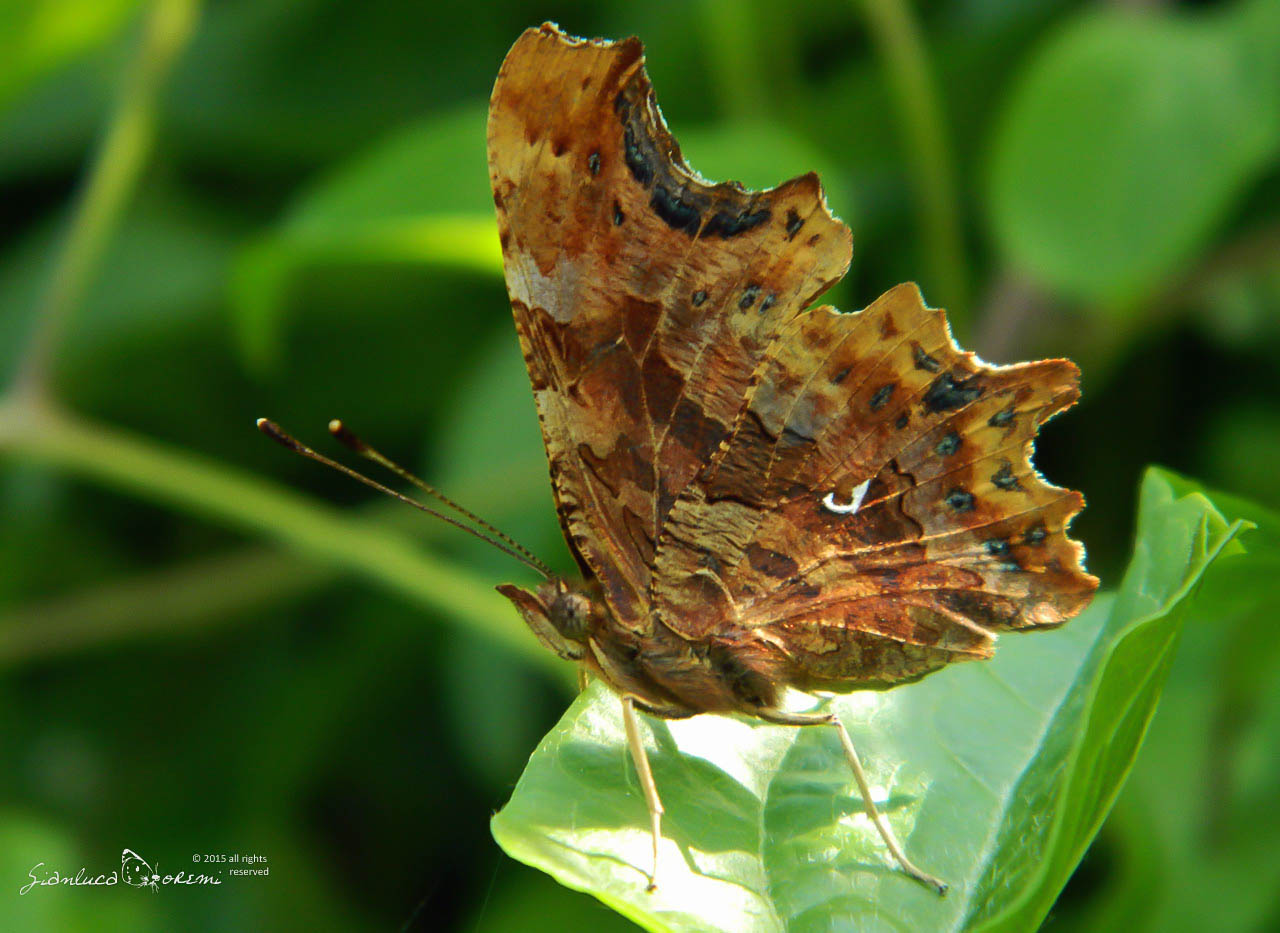
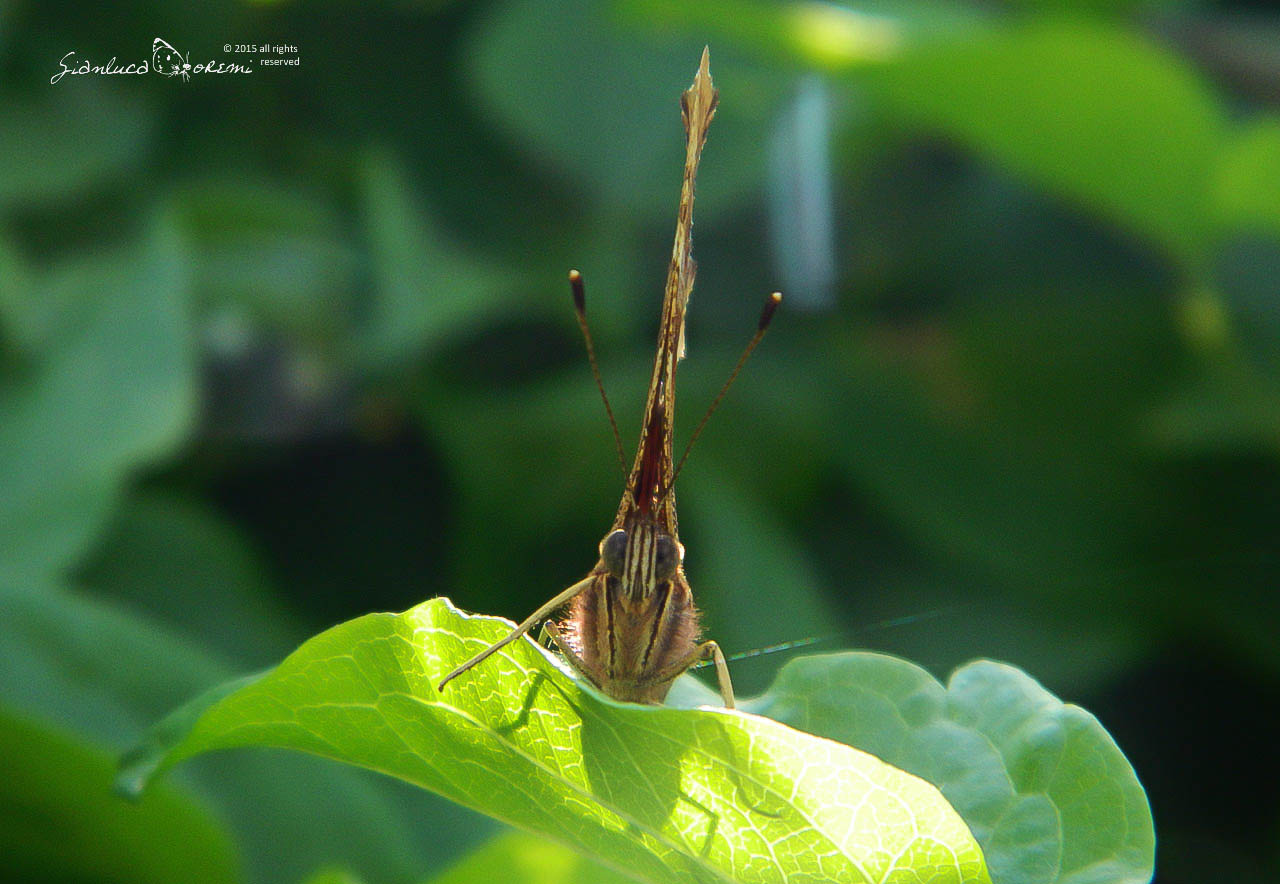
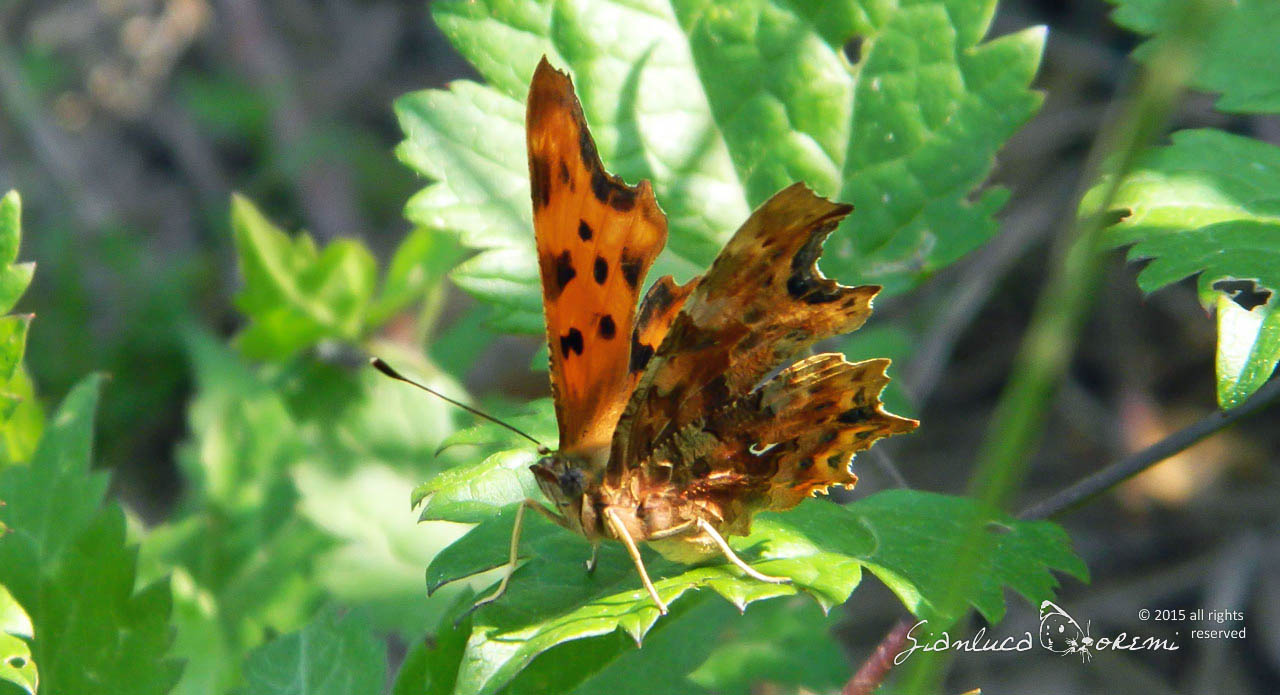
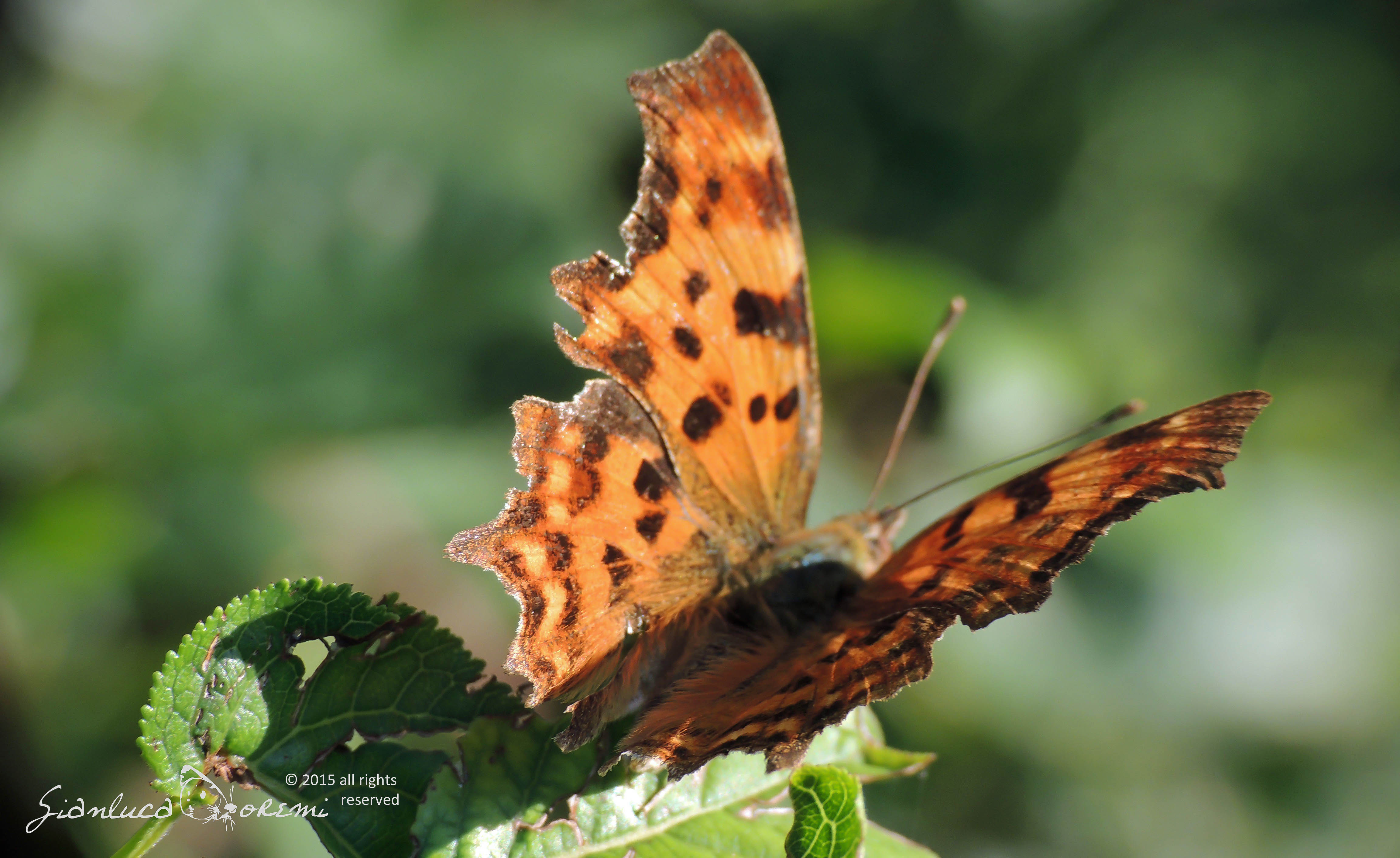

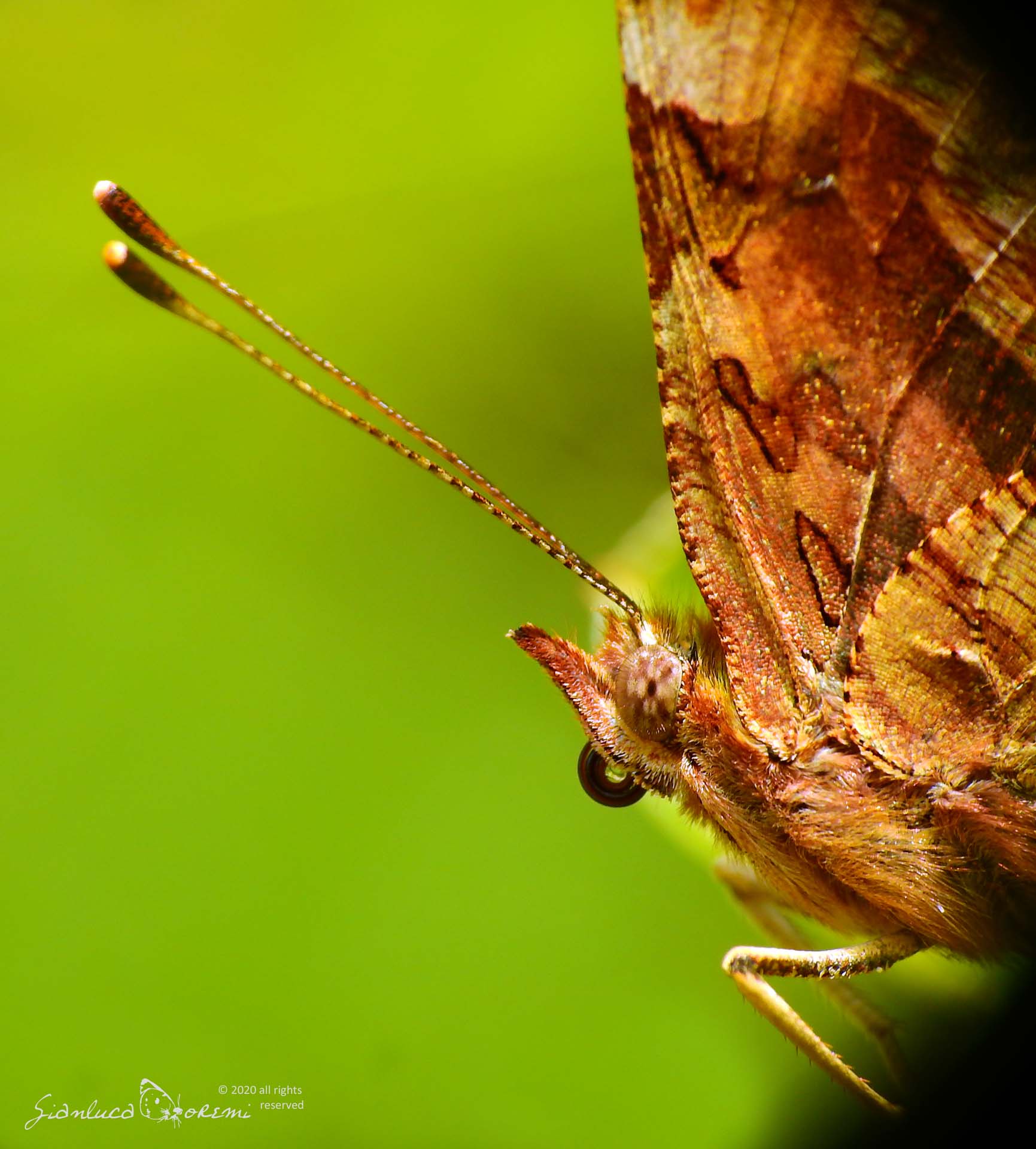
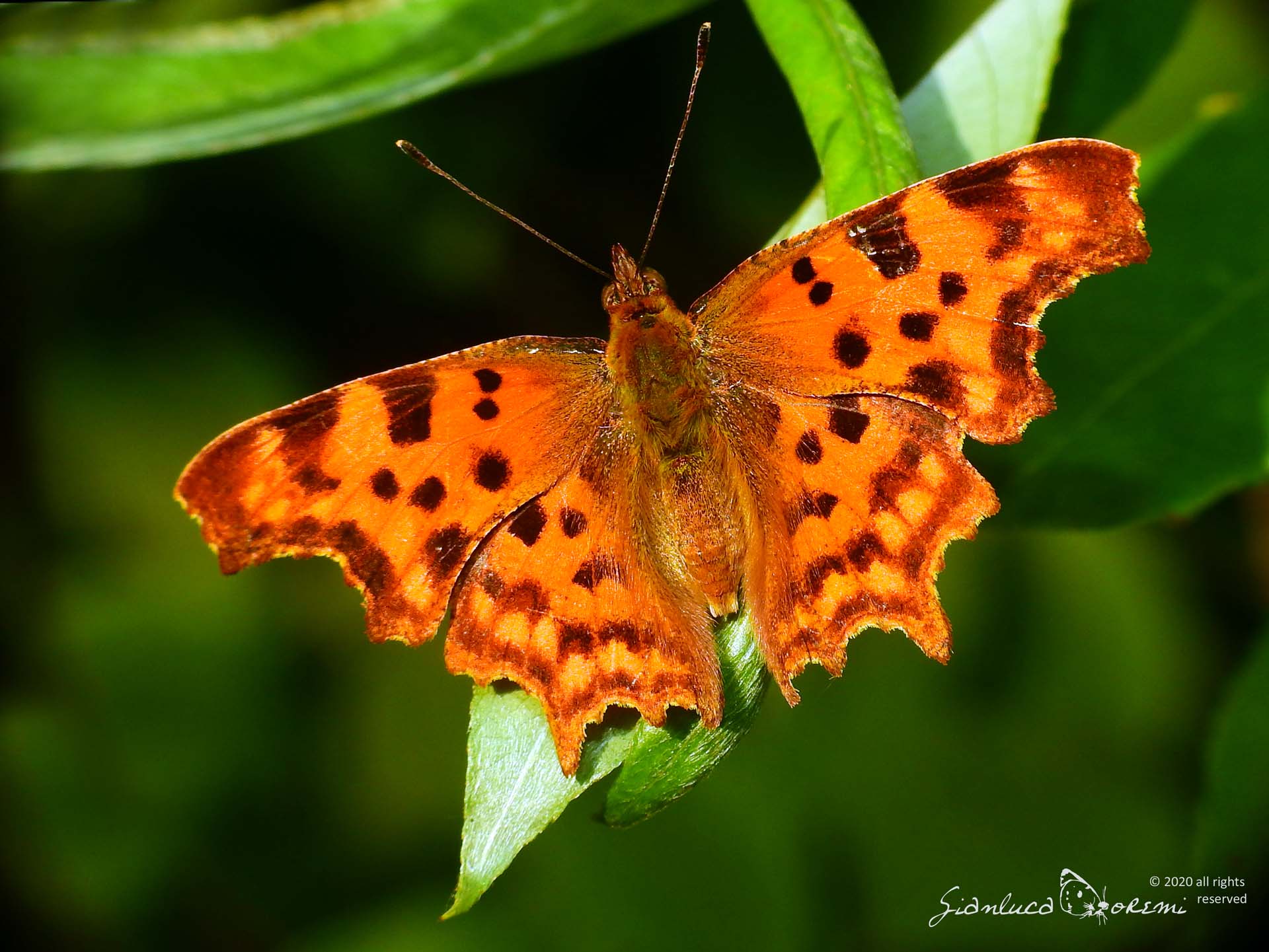
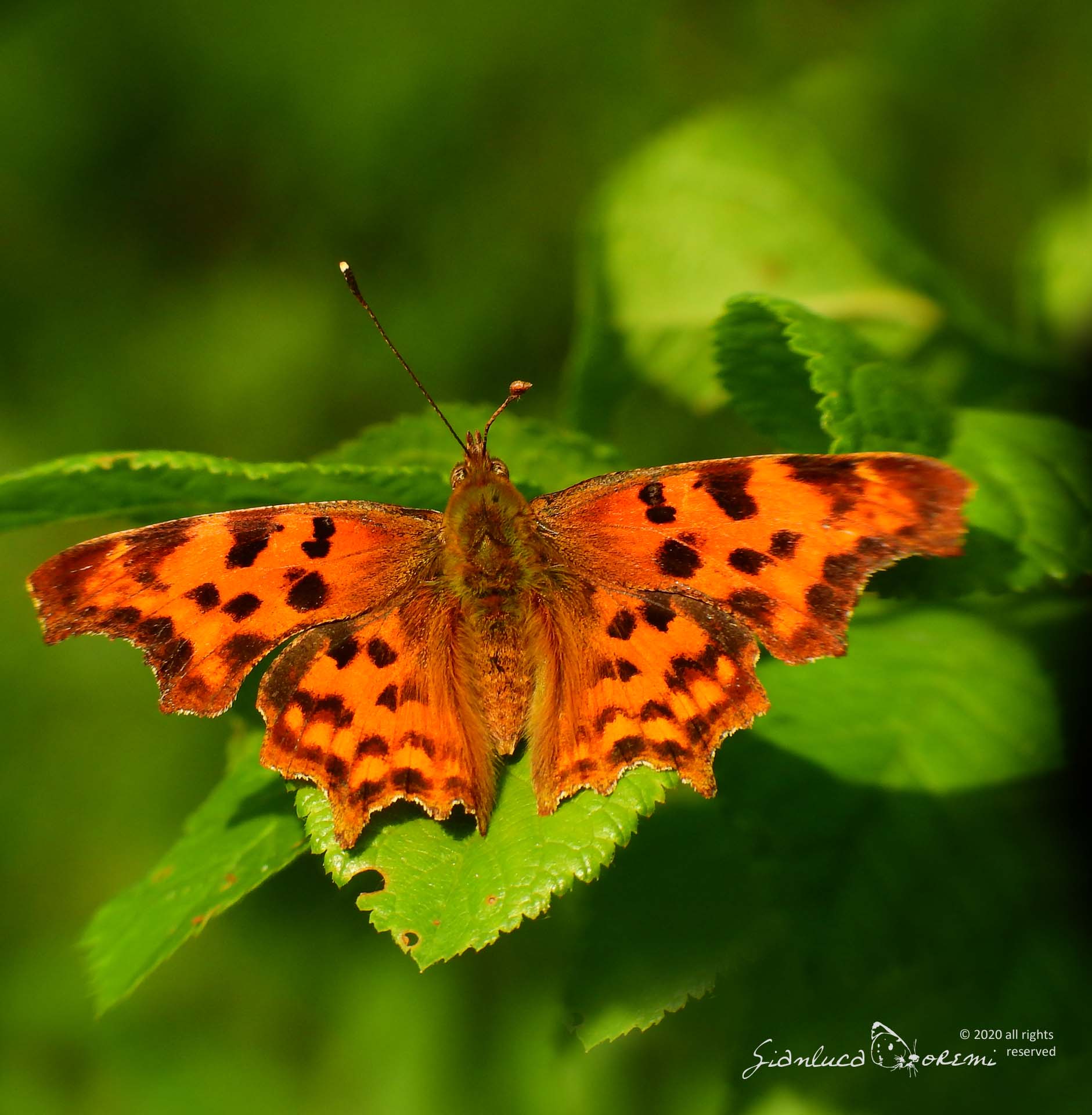
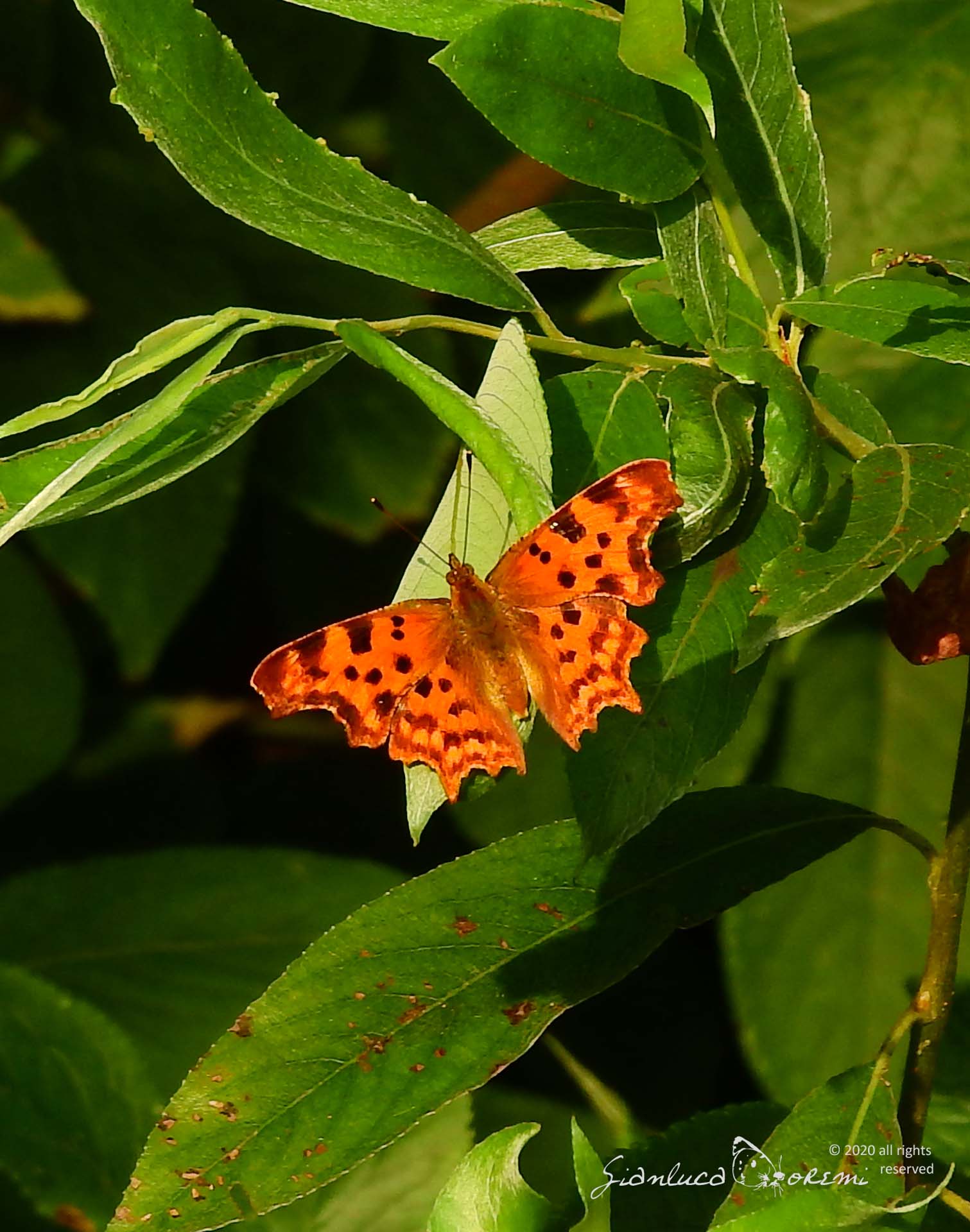

 EN
EN ITA
ITA
Social and publications